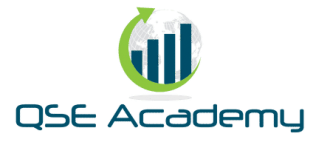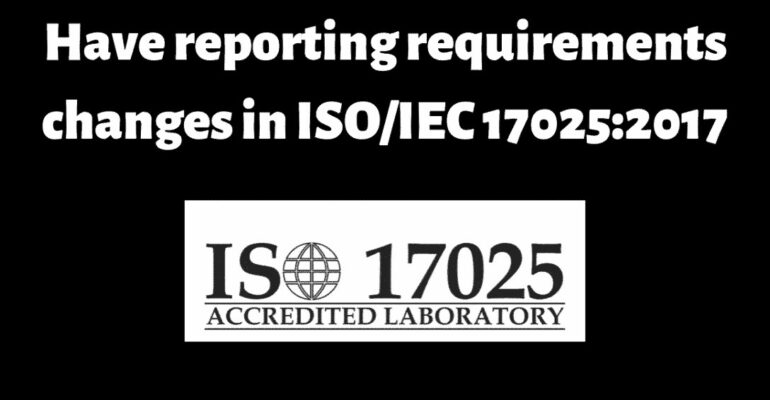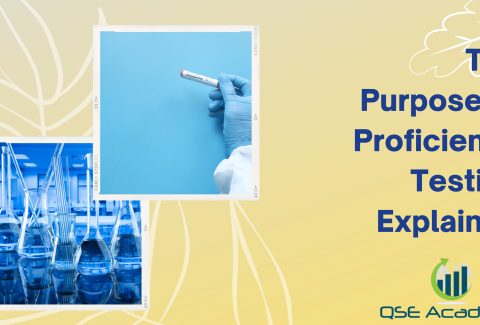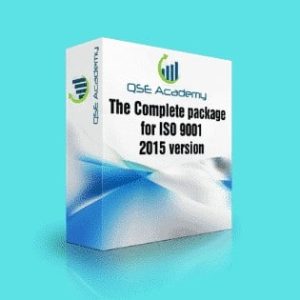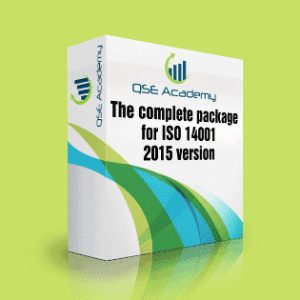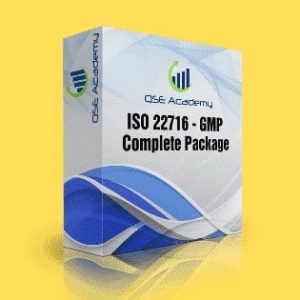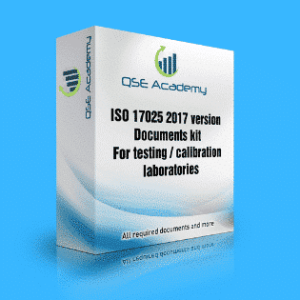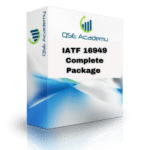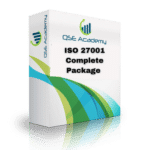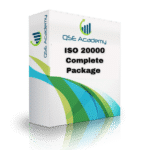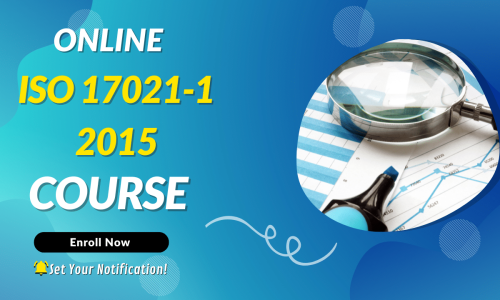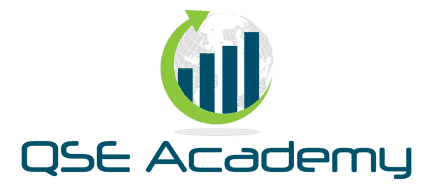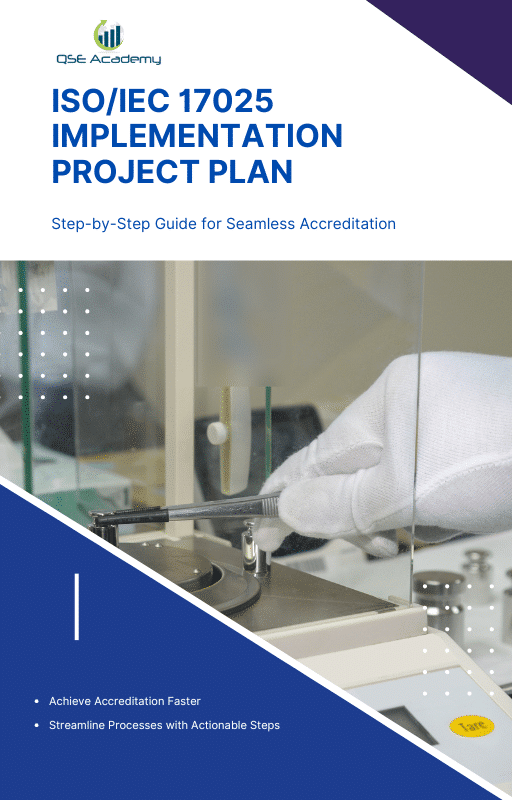Changes in reporting requirements in ISO/IEC 17025:2017
Reporting Requirements in ISO/IEC 17025
When it comes to lab work, results are only as valuable as the way they’re reported. That’s why understanding the reporting requirements in ISO/IEC 17025 is so important. Whether you’re running a testing lab, a calibration facility, or anything in between, your reports need to be clear, complete, and fully aligned with the latest version of the standard.
In simple terms, the reporting requirements in ISO/IEC 17025 refer to the rules around what information must be included in your test or calibration reports—and how it should be presented. ISO/IEC 17025:2017 introduced some key updates compared to the 2005 version, and if you’re still using the old habits, you could easily fall out of compliance without realizing it.
Let’s start by breaking down exactly what changed in the 2017 edition.
What Changed in ISO/IEC 17025:2017 Reporting Requirements
If you’re used to the previous version of the standard, the changes to reporting requirements in ISO/IEC 17025 may feel subtle—but they matter. Clause 7.8 in the 2017 version introduces a more structured and flexible approach, with a bigger focus on clarity, traceability, and customer needs.
Clause 7.8 Explained Simply
Clause 7.8 outlines what needs to go into any test or calibration report issued by an accredited lab. This includes things like:
-
Identification of the lab
-
Unique report number
-
Date of issue
-
Description of the sample or item tested
-
Methods used
-
Results (of course)
-
Any deviations or additions to the method
-
Who authorized the report
What’s new is that ISO now frames this section in a more modular way. Instead of listing everything in one long clause, it breaks it down into smaller subsections (7.8.1 to 7.8.8), making it easier to apply depending on the type of work you’re reporting on—test, calibration, or sampling.
This modular format gives labs more flexibility, but it also means you need to be precise about which requirements apply to your work.
Key Shifts from the 2005 Version
Here are some of the standout differences in the reporting requirements in ISO/IEC 17025 (2017 vs. 2005):
-
Increased focus on customer agreements
Now, what you include in a report depends not just on the standard—but also on what was agreed with the customer. If they don’t need a method name, for example, you might not need to include it (unless traceability would be affected). -
Clearer rules for opinions and interpretations
The standard now gives much more specific guidance on when labs can include opinions or interpretations—and how to document the competence of the person giving them. More on that later. -
Formal handling of statements of conformity
This is now treated as a serious element, with its own section and rules. It’s not something you just throw into a report anymore—it must be based on an agreed decision rule.
Overall, the 2017 update made the reporting requirements in ISO/IEC 17025 more adaptable—but also more dependent on judgment, traceability, and clarity. And that means every lab needs to revisit how they build and review reports.
Minimum Mandatory Elements in Test and Calibration Reports
When it comes to meeting the reporting requirements in ISO/IEC 17025, some parts are flexible—but others are non-negotiable. These are the core elements that every test or calibration report must include, no matter what kind of lab you run or what kind of work you do.
These mandatory elements are there to ensure consistency, traceability, and confidence in your results. Let’s break them down together so they’re easy to remember and apply.
What Must Be Included Every Time
Here’s a simplified list of the minimum elements that ISO/IEC 17025:2017 expects in your reports. Think of these as your “can’t skip it” checklist:
-
Title — Make it clear that the document is a test or calibration report.
-
Name and contact details of the laboratory — This includes your lab’s name, address, and contact info.
-
Unique identification number — Every report should have a unique ID for traceability.
-
Name and address of the customer — Who requested the work? This needs to be clear.
-
Description of the item tested or calibrated — What exactly did you work on?
-
Date of receipt and date of testing or calibration — Helps establish a timeline.
-
Identification of the method used — Be specific here. If it’s a standard method, name it. If it’s an in-house method, identify it clearly.
-
Test or calibration results with units of measurement — This is the core of your report.
-
Name(s), function(s), and signature(s) or equivalent identification of the authorizer(s) — Someone must take responsibility for the release of the report.
These points are at the heart of the reporting requirements in ISO/IEC 17025. If any of these are missing, the report may be considered incomplete—and that can lead to findings during audits.
Optional Elements and When to Include Them
Beyond the must-haves, there are also optional elements that may or may not apply depending on the situation or what the customer has asked for. ISO allows some flexibility here, as long as it’s documented and agreed upon.
Some of these optional elements include:
-
Opinions and interpretations
-
Statement of conformity
-
Measurement uncertainty (for test results, when relevant)
-
Sampling information, if sampling was performed
These aren’t required for every report—but if they are included, they must be handled properly. That means your lab needs a clear process for when and how to include them. And remember: once they’re in the report, they fall under the same reporting requirements in ISO/IEC 17025 as everything else. They need to be accurate, traceable, and reviewed like any other result.
So, while it’s good to be flexible and client-focused, the foundation of your reports should always start with those mandatory elements. Think of them as the solid framework that holds everything else together.
Format Flexibility and Digital Reporting
Let’s talk about something a lot of labs are asking: Do we still have to print every report? Thankfully, the answer is no. One of the more modern updates in the reporting requirements in ISO/IEC 17025 is that the format of reports is now much more flexible—including digital formats.
ISO/IEC 17025:2017 recognizes that labs operate in a digital world. Whether you’re emailing reports to clients, uploading them to a portal, or signing them electronically, it’s all allowed—as long as you do it right.
Printed vs Electronic Reports
The standard doesn’t force you to use one format over another. What matters most is that your reports are controlled, traceable, and secure, regardless of whether they’re printed or digital.
That means, under the reporting requirements in ISO/IEC 17025:
-
Reports must be protected from unauthorized access or changes.
-
Any format used must allow clear, unambiguous presentation of the required information.
-
You must have a procedure in place that defines how reports are prepared, reviewed, approved, and issued—especially if done electronically.
For example, if you’re sending PDF reports by email, make sure the file is locked or protected, and that only authorized people can create or modify the final version. That’s part of maintaining integrity, which ISO takes seriously.
Conditions for Electronic Signatures and Secure Delivery
Electronic signatures are completely acceptable under the reporting requirements in ISO/IEC 17025—but again, there are conditions.
Your system should ensure that:
-
The signature is linked to a unique person (not just a generic “Lab Manager” stamp).
-
The signature is protected and cannot be easily copied or tampered with.
-
The approval process is documented and verifiable.
It’s also important to think about delivery. If you’re emailing reports or using client portals, your method of distribution should prevent unauthorized access. That could mean using password-protected files, secure links, or access-controlled platforms.
What you want to avoid is a situation where someone questions whether a report was changed after it was issued—or if it even came from your lab at all. Secure handling is just as much a part of the reporting requirements in ISO/IEC 17025 as the content of the report itself.
In short, going digital is absolutely fine (and honestly, encouraged for many labs), but it has to be done with the same level of control and oversight you’d apply to a physical document. If it’s official, it must be protected.
Statement of Conformity — New Rules and Cautions
Let’s talk about something that causes a lot of confusion for labs: statements of conformity. These are those parts of a report where you say whether a result meets or doesn’t meet a specific requirement, spec, or standard.
Now, under the updated reporting requirements in ISO/IEC 17025, statements of conformity come with stricter rules. You can’t just add them because a client asked, or because “we’ve always done it that way.” There’s now a clear framework for when and how you can include them—and it starts with something called a decision rule.
When You Can Include Statements of Compliance
Under ISO/IEC 17025:2017, you can include a statement of conformity (also known as a statement of compliance), but only when:
-
The decision rule has been defined, agreed upon with the customer, and documented.
-
The rule is applied consistently across relevant reports.
-
The rule takes into account measurement uncertainty.
In other words, the reporting requirements in ISO/IEC 17025 now ask labs to be crystal clear about how they are determining compliance. It’s no longer acceptable to just say “pass” or “fail” based on raw numbers alone—especially if those numbers come with uncertainty.
Let’s say you’re testing a product that needs to meet a spec of ≤ 10. If your result is 9.8 with a measurement uncertainty of ±0.3, can you confidently say it complies? Maybe. But maybe not. That’s where your decision rule comes in.
Decision Rule Requirement and How to Document It
A decision rule is simply a method for deciding how measurement uncertainty affects the conclusion about compliance. It helps define the boundary between pass and fail—and whether your result really falls within the acceptable range.
The reporting requirements in ISO/IEC 17025 say that if you include a statement of conformity:
-
You must define the decision rule in advance (ideally in your contract or agreement with the client).
-
You must apply the same rule consistently in similar situations.
-
You must reference or explain the rule in the report, especially if it affects the result’s interpretation.
Here’s what this could look like in practice:
“The decision rule applied considers measurement uncertainty using a 95% confidence interval. A result is considered compliant only if the entire interval falls within the specification limit.”
See how that adds clarity? It tells the client exactly how you reached your conclusion—and helps protect your lab from disputes or misunderstandings.
So, yes—statements of conformity are still allowed under the reporting requirements in ISO/IEC 17025. But they now carry a bit more responsibility. They need to be backed by logic, transparency, and solid documentation.
If your lab uses these statements regularly, it’s worth reviewing your templates and contracts to make sure you’re applying decision rules correctly. That way, your reports stay accurate, professional, and fully aligned with the standard.
Reporting Opinions and Interpretations
Let’s talk about one of the most sensitive parts of any lab report: opinions and interpretations. These are the moments when your lab doesn’t just share the results—it explains what those results mean, gives insight, or even offers guidance based on technical expertise.
Now, under the reporting requirements in ISO/IEC 17025, including opinions or interpretations is totally acceptable—but only under certain conditions. This is where things can get a bit tricky if you’re not careful.
When Interpretations Are Allowed
The standard makes it clear: labs are allowed to provide opinions and interpretations only when they are authorized to do so, and when it has been agreed with the customer in advance.
So before you add any comments like “sample meets customer specifications” or “this result may indicate a system failure,” ask yourself:
-
Did the client request this?
-
Are we competent to make this kind of judgment?
-
Have we documented this in the contract or agreement?
The reporting requirements in ISO/IEC 17025 emphasize the importance of clarity here. If you’re offering interpretations, they need to be clearly identified as such—so clients don’t confuse them with test results or measurements.
Many labs will include a sentence like:
“The following interpretations are provided upon request and are based on the laboratory’s expert knowledge of the method and applicable standards.”
This helps draw a clean line between raw data and added commentary.
Who Can Report Them and How to Document Competence
Opinions and interpretations can’t come from just anyone on the team. According to the reporting requirements in ISO/IEC 17025, they must be provided by individuals who are authorized and competent—meaning they have the right training, experience, and understanding of both the methods and the context.
Your lab should be able to show:
-
Who is allowed to provide interpretations
-
What qualifications or competencies they hold
-
How those decisions are reviewed and approved
And yes, this should be part of your documented system—whether it’s listed in your quality manual, competence matrix, or internal procedures.
Another good practice? Make sure the interpretation is clearly separated from the test results in your report. Use headings, formatting, or notes to avoid confusion. This kind of transparency is exactly what the reporting requirements in ISO/IEC 17025 are designed to support.
Amendments and Re-Issued Reports
Let’s be honest—no matter how careful a lab is, sometimes reports need to be corrected. Maybe a typo slipped through, maybe a client requested an update, or maybe new information came to light. The good news? The reporting requirements in ISO/IEC 17025 have clear rules for how to handle these situations properly.
The goal is to make sure that any amended or re-issued report is fully traceable, avoids confusion, and clearly shows what’s changed—and why.
Rules for Issuing Revised Reports
Under the reporting requirements in ISO/IEC 17025, once a report has been officially released, any corrections or changes must be clearly documented. That means you can’t just quietly fix the error and resend the document without a trace.
Here’s what ISO expects when issuing an amended or re-issued report:
-
Clearly mark the revised version — Use terms like “Amended Report” or “Re-Issued Report” directly on the document.
-
State the reason for the change — Add a short note explaining why the report was updated (e.g., corrected client name, revised results, updated method reference).
-
Maintain a record of the original — Don’t delete or overwrite the original report. Keep both versions on file for traceability.
-
Ensure version control — Include a version number, revision date, or similar tracking method so it’s obvious which version is current.
This level of control is essential under the reporting requirements in ISO/IEC 17025. It shows auditors—and your clients—that your lab manages changes in a transparent and professional way.
How to Avoid Confusion with Versions and Corrections
One of the biggest risks when dealing with re-issued reports is confusion. If a client accidentally uses the wrong version, or if two versions are floating around without clear differences, it can create serious problems.
Here are some tips to keep things clean and compliant:
-
Use a revision table in the report footer or appendix to list changes and dates.
-
Include a statement like, “This report supersedes Report No. 1234 dated [original date].”
-
Always notify the client when a report has been amended—and confirm that they’re using the most recent version.
Even small changes, like fixing a spelling error or updating a contact name, need to be managed within the scope of the reporting requirements in ISO/IEC 17025. Why? Because once a report is issued, it’s a controlled document—and changing it without proper documentation breaks that control.
In short, ISO isn’t trying to make your life harder. It just wants to make sure that all your reports—new or corrected—are trustworthy, clear, and traceable.
Reporting Requirements for Subcontracted Work
Subcontracting is sometimes necessary—maybe your lab doesn’t have the right equipment for a specific test, or you’re short on time and need to outsource part of the job. Totally fine. ISO/IEC 17025 allows it. But when you subcontract, your responsibilities don’t go away—they just shift slightly.
And yes, the reporting requirements in ISO/IEC 17025 have specific rules about how subcontracted work must be reported. Let’s walk through it together.
Identifying Subcontractors in Reports
When your lab uses a subcontractor, it’s not enough to simply attach their report and call it a day. According to the reporting requirements in ISO/IEC 17025, you need to clearly state:
-
That the work (or part of it) was performed by another lab
-
Who performed the work (name and contact details of the subcontractor)
-
Which parts of the results come from the subcontractor
This information must be clearly indicated in the test or calibration report—especially if your lab is the one taking full responsibility for the results.
Let’s say your lab does the sampling and then sends the samples to a partner lab for analysis. When reporting, you would note something like:
“Analysis of Sample A was performed by XYZ Labs, an ISO/IEC 17025 accredited subcontractor. Results are reported under their responsibility.”
This level of transparency is a key part of the reporting requirements in ISO/IEC 17025, and it helps maintain traceability for clients, auditors, and regulators alike.
Lab Responsibility and Traceability Rules
Here’s something important: even when you subcontract, your lab still holds responsibility for the quality and integrity of the final report—unless you clearly state otherwise.
If you’re integrating subcontracted results into your own report, your lab is essentially vouching for those results. That means you need to:
-
Verify the subcontractor is competent (preferably accredited)
-
Maintain documentation of the subcontractor’s qualifications
-
Review and approve the subcontracted results before including them
In some cases, clients might request results directly from the subcontractor. That’s fine, too—but the reporting requirements in ISO/IEC 17025 still ask you to define those arrangements clearly, ideally in writing and before the work begins.
Here’s the takeaway: ISO isn’t saying you can’t subcontract—it’s just saying that if you do, you need to stay transparent, stay responsible, and report the work clearly and accurately.
Common Pitfalls in Reporting Requirements in ISO/IEC 17025
By now, you’ve probably realized that reporting requirements in ISO/IEC 17025 are about more than just ticking boxes. They’re about creating clear, consistent, and trustworthy lab reports. But even the most experienced labs can slip up—especially when the team is busy, or when older habits sneak in.
Let’s take a moment to go through some of the most common pitfalls, so you can steer clear of them before they turn into nonconformities during an audit.
Incomplete or Missing Mandatory Elements
This one sounds obvious, but it happens more than you might think. A report goes out with a missing date, no unique ID, or without clearly naming the person who approved it. These are all required under the reporting requirements in ISO/IEC 17025, and leaving them out—even by accident—can raise red flags.
Quick tip: Create a final review checklist that includes all mandatory elements. Make sure no report gets issued until every item is accounted for.
Misuse of Statements of Conformity
Including a “pass” or “fail” result without a clear decision rule? That’s a big no-no. One of the newer, and often overlooked, parts of the reporting requirements in ISO/IEC 17025 is how carefully you must handle statements of conformity.
If your lab issues these kinds of statements, make sure:
-
The decision rule is defined and documented.
-
The client has agreed to it.
-
The rule accounts for measurement uncertainty.
Even if the result is clearly within spec, you still need that decision rule if you’re calling it compliant.
Blurring the Line Between Results and Interpretations
Another pitfall? Mixing opinions and interpretations directly into the results section of the report. This creates confusion, especially for clients who may not know how to separate raw data from expert judgment.
The reporting requirements in ISO/IEC 17025 are clear: if you include interpretations, they need to be:
-
Clearly labeled as such
-
Provided only by authorized and competent personnel
-
Requested or agreed upon by the customer
Clarity here protects both your lab and your clients.
Lack of Version Control on Amended Reports
Updating a report without marking it as revised is a surprisingly common issue. Maybe someone fixes a typo and re-sends the report without noting the change—but this breaks traceability.
Under the reporting requirements in ISO/IEC 17025, you must:
-
Label revised reports clearly
-
Keep both the original and the updated version
-
Record why the report was changed and who approved it
Skipping this can make it hard to defend your report’s integrity during an audit.
Forgetting to Identify Subcontracted Work
If part of the work was done by another lab and you don’t mention it in the report, that’s a compliance risk. Even if the subcontractor is accredited, your report must state:
-
Who did the work
-
Which part of the work was subcontracted
-
Whether your lab is taking responsibility for those results
This is an essential part of the reporting requirements in ISO/IEC 17025 and a detail that many labs overlook.
I hold a Master’s degree in Quality Management, and I’ve built my career specializing in the ISO/IEC 17000 series standards, including ISO/IEC 17025, ISO 15189, ISO/IEC 17020, and ISO/IEC 17065. My background includes hands-on experience in accreditation preparation, documentation development, and internal auditing for laboratories and certification bodies. I’ve worked closely with teams in testing, calibration, inspection, and medical laboratories, helping them achieve and maintain compliance with international accreditation requirements. I’ve also received professional training in internal audits for ISO/IEC 17025 and ISO 15189, with practical involvement in managing nonconformities, improving quality systems, and aligning operations with standard requirements. At QSE Academy, I contribute technical content that turns complex accreditation standards into practical, step-by-step guidance for labs and assessors around the world. I’m passionate about supporting quality-driven organizations and making the path to accreditation clear, structured, and achievable.
